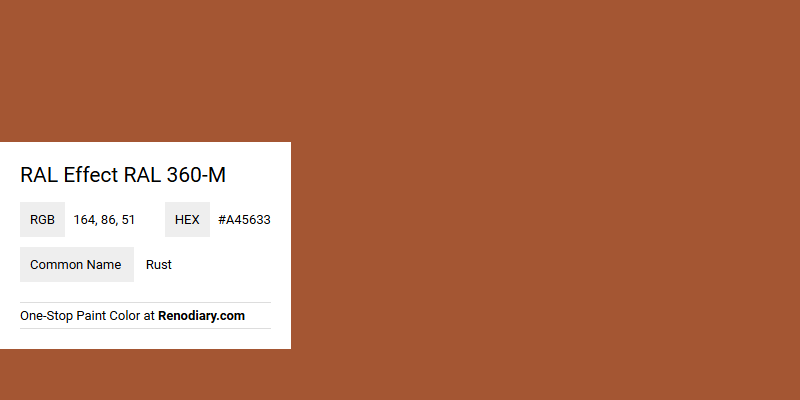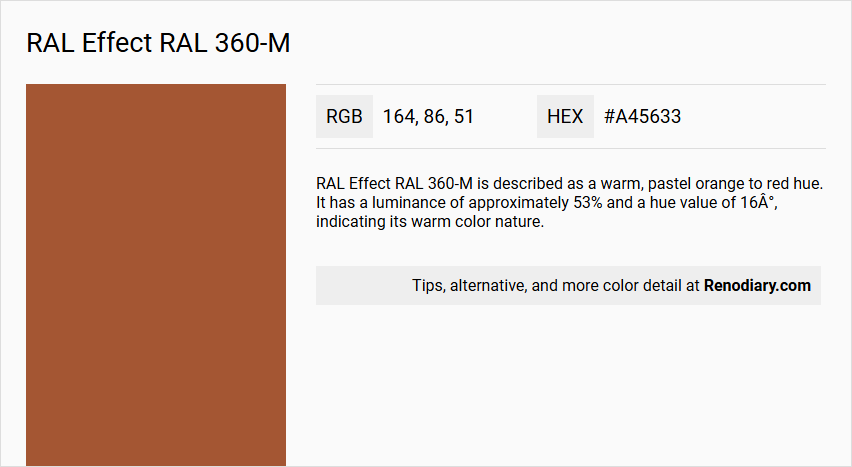
RAL Effect RAL 360-M is known as Rust, a distinctive and warm hue that evokes the natural aging process of iron. This rich color, represented by the RGB values (164,86,51), combines deep, earthy tones that add an industrial yet cozy touch to any design palette. Often used in both interior and exterior applications, Rust serves as an excellent choice for creating an inviting and grounded atmosphere.
Color Description
RAL Effect RAL 360-M is described as a warm, pastel orange to red hue. It has a luminance of approximately 53% and a hue value of 16°, indicating its warm color nature.
Undertones
The undertone of RAL 360-M is accurately described as a Red hue, although it also exhibits characteristics of a pastel orange color.
Color Values
- HEX: #A45633 or #A56754 (slight variations depending on the source)
- RGB: 164, 86, 51 or 165, 103, 84 (slight variations depending on the source)
- HSL: 16.5, 36.5%, 51.2%
- HSV: 16.5, 51.7%, 69%
- Lab: 53, 23.5, 24.9
Usage
RAL 360-M can be used for various applications such as painting living room walls, kitchen cabinets, bedroom accent walls, bathrooms, or house exteriors. It is suitable for both interior and exterior designs.
Atmosphere
This color creates a warm and inviting atmosphere, making it ideal for spaces where a cozy and vibrant feel is desired. The pastel orange to red hue adds a sense of energy and warmth to the surroundings.
RAL Effect RAL 360-M Color Alternative
RAL Effect RAL 360-M presents a striking hue that attracts attention with its unique vibrancy and depth, serving as a remarkable centerpiece for any styled space. Farrow and Ball Bamboozle 304, Sherwin Williams Copper Mountain SW 6356, and Sherwin Williams Spicy Hue SW 6342 stand out as compelling alternatives that capture similar nuances while offering distinct character and finish. Each color alternative complements RAL Effect RAL 360-M in its own right, ensuring a versatile palette for designers seeking to explore creative and well-balanced décor options.
Bathroom
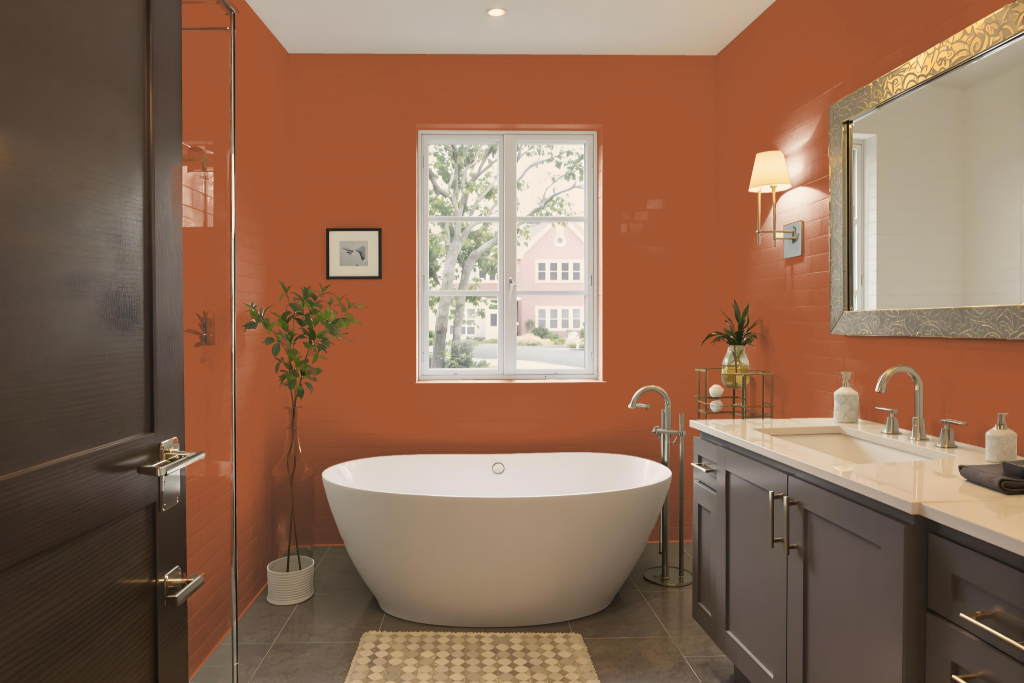
For a bathroom design, RAL Effect RAL 360-M delivers a striking appeal with its lively touch, creating a warm and inviting atmosphere when applied to accent walls, cabinetry, or trims. Its ability to add vibrancy enhances the room's overall mood, making the space feel cozy and intimate, especially when integrated with complementary tones and thoughtful lighting.
To ensure the true character of this color is captured, it is recommended to examine it in person using a physical color fan, as on-screen depictions may not accurately reflect its authentic appearance. This hands-on approach allows designers to appreciate the nuance and adjust surrounding elements for the perfect ambiance.
Bedroom
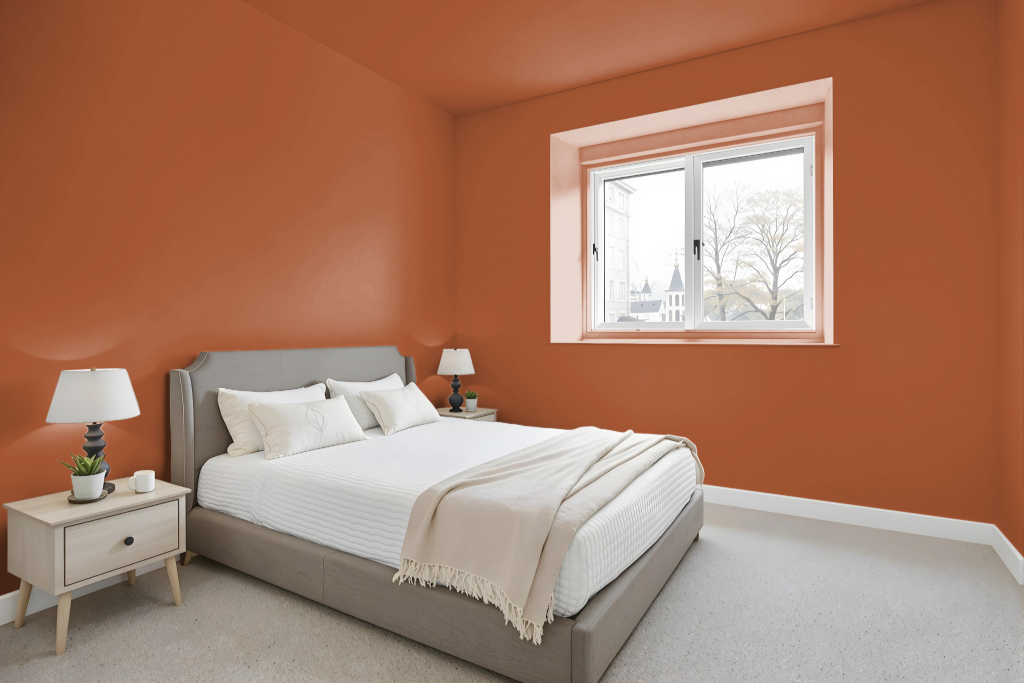
For a bedroom color scheme featuring RAL 360-M, consider pairing this rich tone with softer accents like light taupe, pale chestnut, or linen to evoke a balanced and inviting atmosphere. These gentle hues help mellow the intensity of the main color while maintaining a warm and welcoming feel.
To create visual depth and contrast, incorporate darker tones such as seal brown, cafe noir, or onyx, and introduce complementary accents with medium jungle green or pastel brown. Incorporating grounding neutrals like beaver or khaki further enhances the cozy ambiance and creates a harmonious, appealing space.
Kitchen
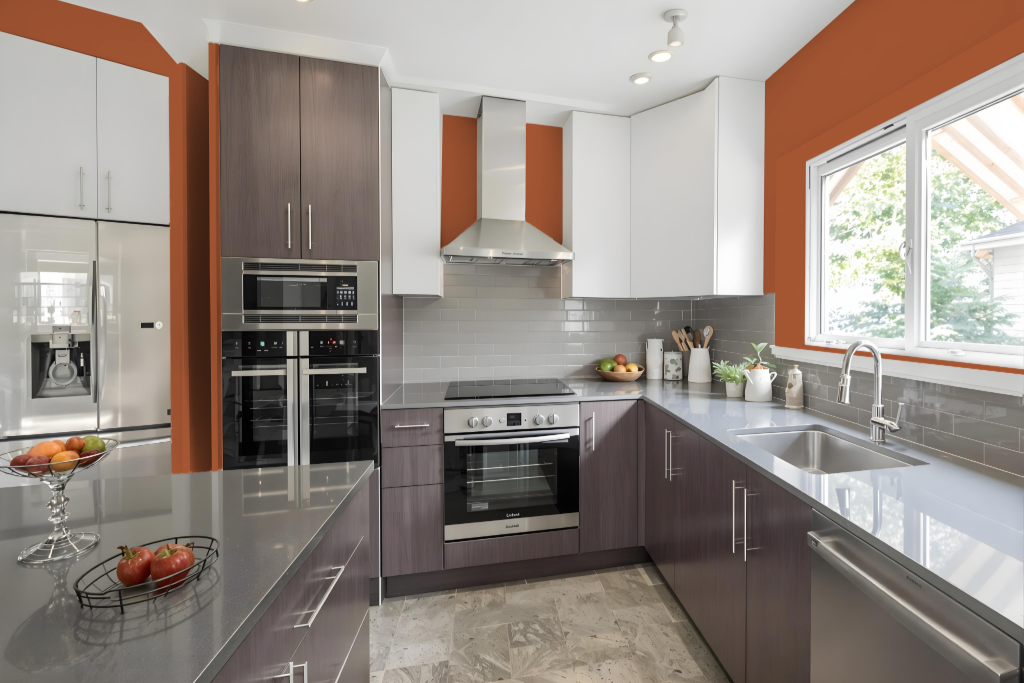
For a kitchen color scheme, RAL Effect RAL 360-M delivers a vibrant and inviting red tone that infuses a warm, energetic aura into the space. This warm red hue brings intimacy to larger areas, making the environment perfect for hosting family and friends, whether applied on walls, cabinets, or used as an accent to create a passionate atmosphere.
Pairing this color with neutral hues like whites, creams, and natural wood finishes establishes a balanced yet focused design, ensuring the red remains the compelling centerpiece of the kitchen. In addition to its aesthetic appeal, the shade encourages social interaction and stimulates appetite, transforming the area into a dynamic setting for everyday living and gatherings.
Living Room
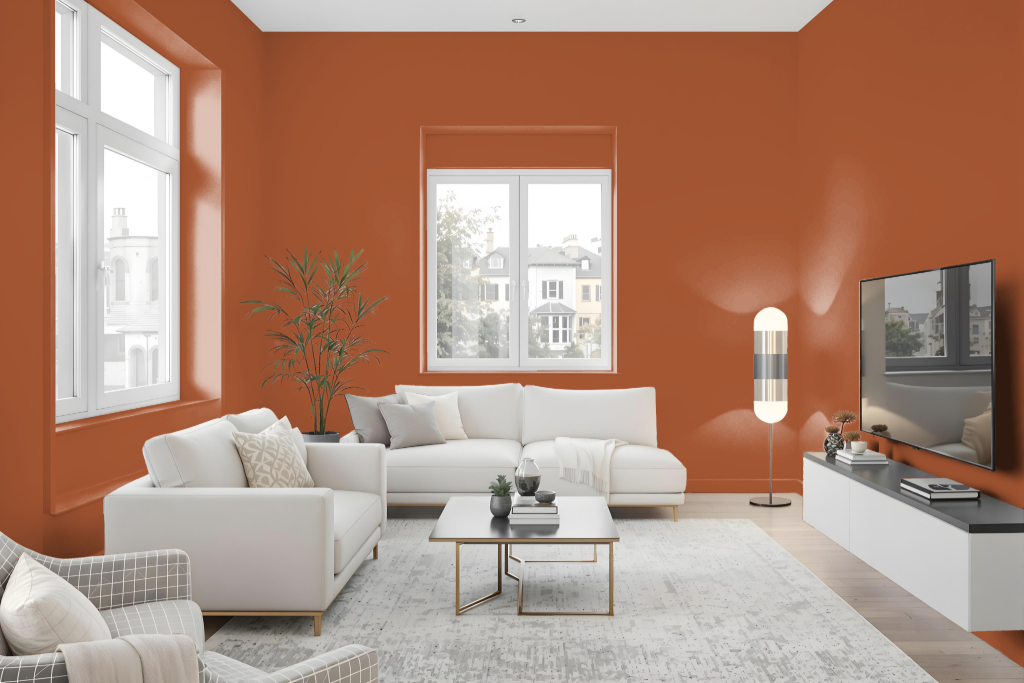
In the living room, RAL Effect RAL 360-M introduces a warm and inviting vibe that instantly elevates the space. This rich hue enhances accent walls, kitchen details, and bedroom trims while also creating a distinctive look for exterior surfaces.
Complementing neutral tones such as beige, gray, and white alongside accents of blue and green results in a balanced, harmonious design. When incorporated into furniture and decor, pairing this vibrant shade with earthy tones like coffee, bone, and fawn further amplifies the cozy atmosphere of any room.
Outdoor
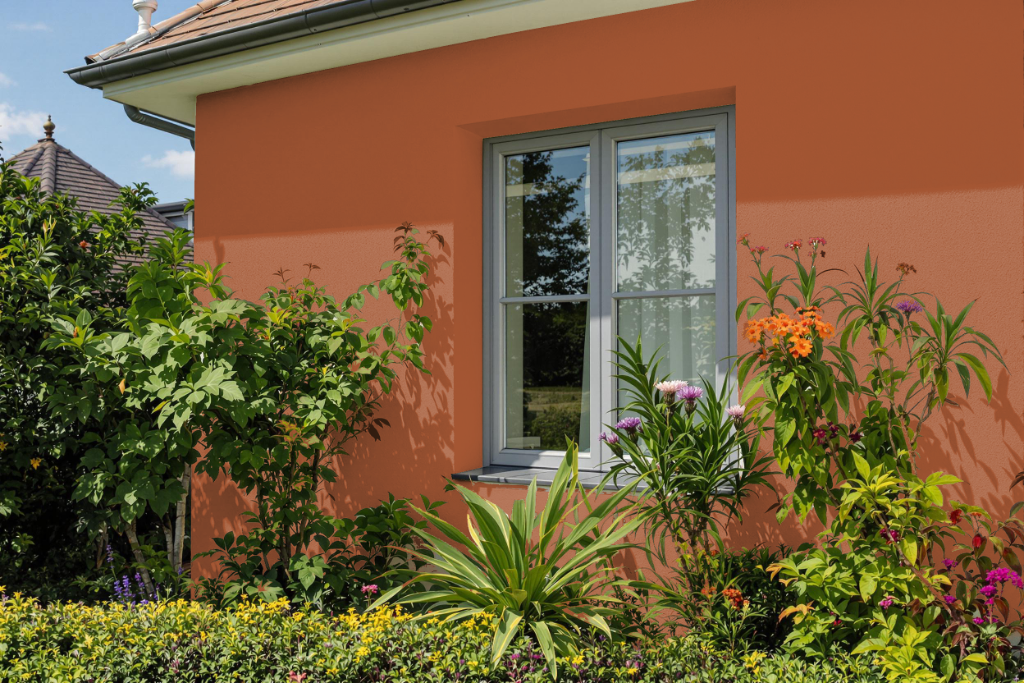
Home outdoor color RAL Effect RAL 360-M brings a modern yet robust appeal to exterior spaces, making it an excellent choice for home outdoor painting. The color is best appreciated through physical samples to ensure accurate representation, as digital displays may not capture its true appearance.
This color belongs to a dynamic color system that delivers consistency and reliability for various applications. Its specific light reflectance value has been carefully considered to maintain an optimal balance in different lighting conditions, ensuring that the final appearance remains as intended during outdoor use.
